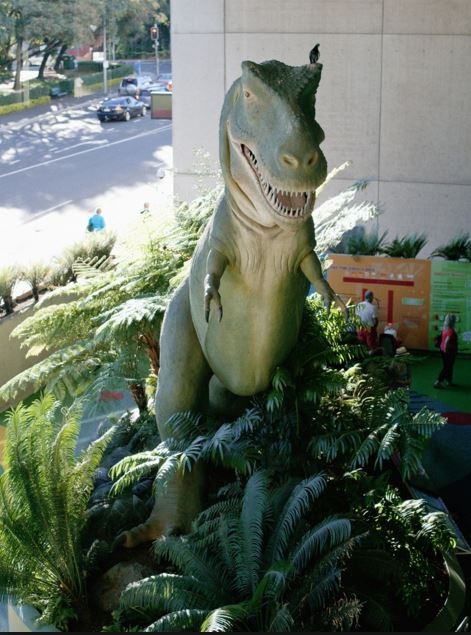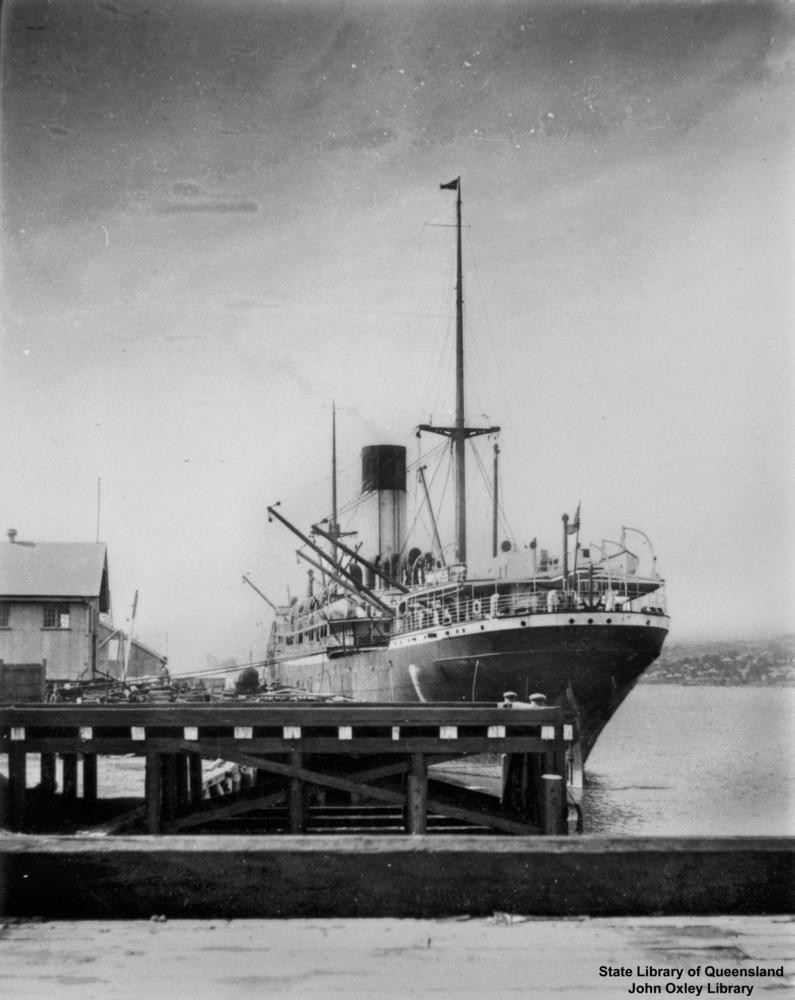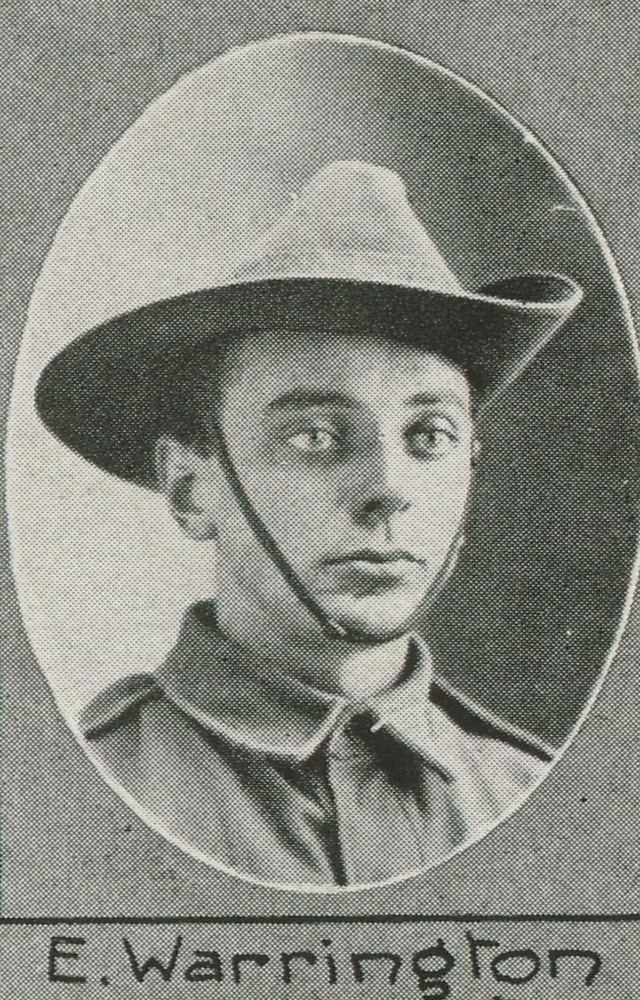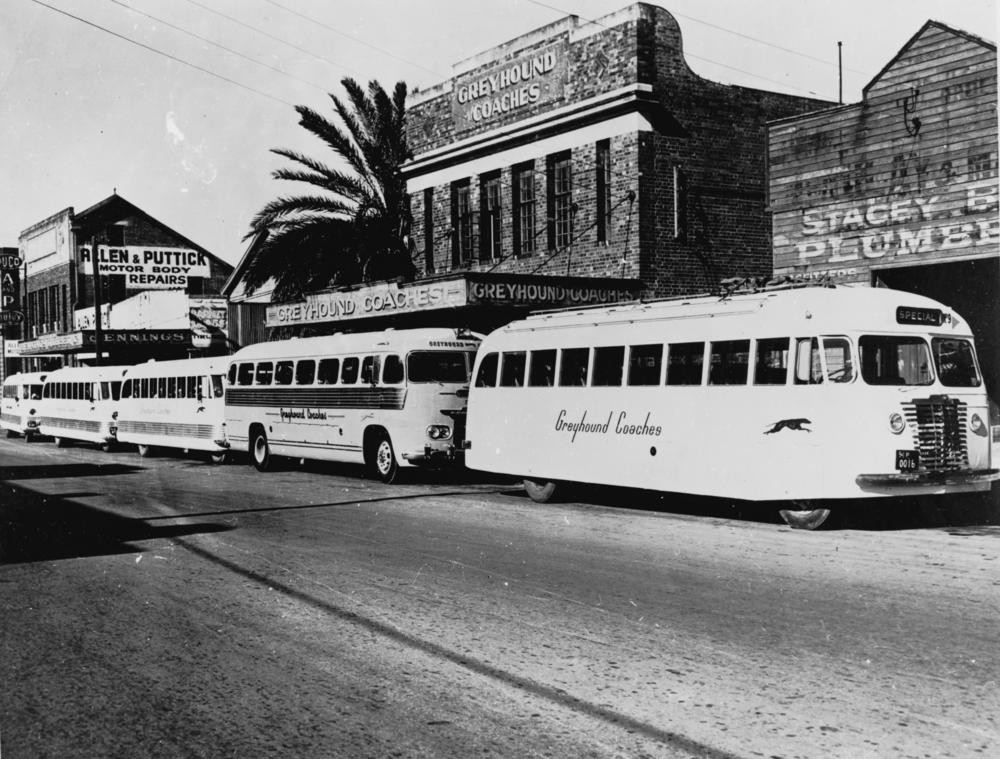The Anzac of Grey Street: Edmund Warrington, Our Heroic Cad
By JOL Admin | 14 January 2016
Before Grey Street in South Brisbane was home to the cultural precinct gang of four (SLQ, QAGOMA and QM), it was the home of St Helen’s private hospital, a bustling river port, and as we discovered, one of Queensland’s Anzacs.
The familiar story of Gallipoli and the Anzac legend intersects with the documented experiences of the diggers that exist silently in library collections and archives around the country. The idea that our soldiers are susceptible to criticism encroaches on the tradition of the Anzac legacy, but succeeds in reorienting the idea that, as heroes of the Great War, they lived heroic lives and continued to do so until their death, however their end was met. The contradictions our soldiers left us lie just beneath the surface, as the truth often does.
The initial discovery was made when one of our volunteers, Tony Bujeya, pointed out that in 1942 Lieut. Edmund Warrington, whose Discovering Anzacs profile he was working on, listed his address as 56 Grey St, South Brisbane. Tony speculated this was either the current site of the State Library or very close to it and I resolved to find out.
If you are looking for information about Brisbane’s history, one of your best allies is the John Oxley Library at State Library of Queensland. Armed with just a name, address and a year, Reference Librarian Christina Ealing-Godbold and I scoured the 1939 Wises Directory to reconstruct Grey Street in 1942. We were able to posit 56-68 Grey St as residential blocks between Fish Lane and Peel St, inner city homes amongst Beckers Chemist, Eng S & A Bank Ltd (English, Scottish & Australian) and Wah Hing’s fruit shop. 56 Grey St was owned by Mrs. E.A. Shepard at the time and it’s possible she ran a boarding house that was home to returned soldiers such as Edmund Warrington, who listed 56 Grey St as his address in both the 1943 and 1949 Commonwealth electoral rolls. It wasn’t uncommon for returned soldiers, long after 1918, to still be mending together the fractures of their lives.
With the site confirmed, it was then a matter of unearthing the records of the WW1 soldier that lived on the same site we now call the Queensland Museum; and ate his breakfast in roughly the same place as the Tyrannosaurus rex in the QM dinosaur garden eats his.

The tyrannosaurus rex in the dinosaur garden at Queensland Museum. (Image courtesy of bigthingsofoz.wordpress)
Lieut. Edmund Warrington enlisted in the A.I.F on the 1st of April, 1915 in Pomona on the Sunshine Coast, and embarked from Brisbane with 1,022 other soldiers of the 26th Battalion on 24th May 1915 on the HMAT ‘Ascanius’. After some weeks training, they arrived at Gallipoli in the dark latter days of the campaign, before being sent to the trenches of the Western Front in France and Belgium. His service record shows five hospital stays and two AWL entries (Absent Without Leave). He was severely reprimanded at the end of the war for refusing to embark in Liverpool on the S.S “Megantic”, which was headed back to Australia, before finally arriving back in Melbourne in March 1920.

HMAT Ascanius, the troopship Edmund Warrington left Australia on in 1915.
The habitual response is to award Edmund’s memory because of his service. However the more I searched State Library of Queensland resources and the more documented facets I discovered about his life; the more he challenged my known interpretations of Anzac characteristics.
Edmund’s military records show he married a British nurse, Emilie Edwards in 1918, and she arrived in Australia on a passenger ship shortly after he did in 1920. The couple lived in Melbourne before Emilie’s mother in England received word in 1924 that they had moved to Perth, Western Australia. She received frequent letters from Emilie until one day in December 1924, when a cablegram arrived, requesting money to be sent to Edmund’s solicitor in Perth. Believing that her daughter was in need, Mrs. Edwards wired through the money, which was not acknowledged. After another similar cablegram in 1926 and 2 years of no communication with her daughter, Edmund’s military records hold a letter written in May of that year on Mrs. Edwards’ behalf, from the Cambridge Borough Police to the Chief of Police in Perth requesting an investigation into the alleged fraud and her daughter’s whereabouts.
Edmund had a prior engagement before his marriage to Emilie; to Miss Barbara David, the daughter of a Welsh Colonel. The news made its way to the Gympie Times in May 1916, but there is no mention of Barbara or their impending marriage before or since.
His National Archive WW1 records reveal a peculiar slip of paper, undated, stating the allottee of his soldier salary to go to “Wife. Rita Warrington. 11 Balfour Rd, Southport. England” for the amount of 8/- per week. Access provided by State Library of Queensland to marriage records from the UK show no such marriage was registered. We can gauge the date of this entry as the slip of paper lists Edmund as 2nd Lieutenant and his military records show this was between September 1917 and November 1918. However, he married Emilie Edwards in France on 25 October 1918 and Emilie was from Cambridge, so Rita’s identity remains a line on an otherwise empty page of the script of Edmund Warrington’s life.
He took approved leave in 1919 to produce theatre with the Australian Army Entertainers, and in some regard, many aspects of Edmund’s life could be deemed a performance. At various points he described himself as a shipping clerk, an accountant and his mother-in-law was under the impression he was a mining engineer. His 1950 obituary found in Trove described him most accurately, as a producer, writer, stage manager and actor.

Edmund Warrington as his photograph appears on p. 25 of The Queenslander Pictorial, supplement to the Queenslander, 12 June, 1915.
Over the years rave reviews of his productions appeared in newspapers across the country. Dozens of articles in Trove digitised newspapers reported he performed in Sydney, Melbourne, Perth, Adelaide, Newcastle and so on. He was in the 1931 Australian film ‘Diggers’, and his satirical playlet on conditions in WW1, ‘A Dud Dream’, initially staged in London, was a hit with Australian audiences.
That’s possibly how his wife Emilie found out about his whereabouts, tracked him down, and took him to court for abandonment in August 1926 where he was ordered to pay her £4 a week maintenance. She had tired of his sporadic promises that he would send for her, send money, or both.
Who was Edmund Warrington? Was he the man who faced the bloody battlefields of Gallipoli and the Western Front and not only survived, but fought for his country through to the grisly end, made the rank of commissioned officer and was awarded 3 medals? Or the man who seemingly abandoned one, possibly two wives, committed fraud and served 7 days in jail in 1938 for stealing a tie and some tinned shrimp? Although the paper states the shrimp and tie offender was 43, and our Edmund was 47 at the time, I can imagine Edmund appreciated good style.
The likely answer is he was both; and more. These contradictions are entirely human but such is the shadow cast by the Anzac legend it challenged my ability to comfortably reconcile one aspect of the man with the other. It is crucial our depth of understanding be greater than the depth of our opinion in order to appreciate the sacrifice these men and women made. Of the 57,000 Queenslanders that fought during WW1, they couldn’t all be icons. But they are all Anzacs.

Comments
Your email address will not be published.
We welcome relevant, respectful comments.